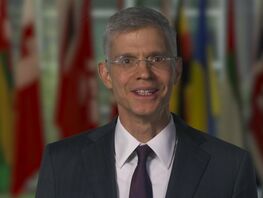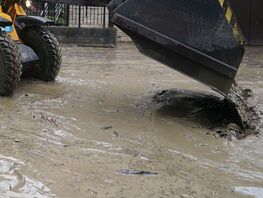Central Asia will face water shortage in 2028-2029. The EDB Board Chairman Nikolay Podguzov announced at the World Hydropower Congress.
According to him, a significant increase in demand for electricity is expected in the region at the same time. Hydropower plays a key role in the region not only in electricity generation, but also in regulating the flow of rivers for irrigation purposes. Therefore, the countries are interested in multipurpose use of their water resources and want to attract investments to develop water potential.
«Great efforts are being made to create favorable conditions for investment in the modernization of existing and construction of new hydropower plants, as well as in the development of irrigation systems in the region,» Nikolay Podguzov said.
He also noted that the construction of new hydropower plants with reservoirs and modernization of existing HPPs will mitigate the effects of climate change and ensure economic and social development of the region, which is largely dependent on affordable green energy and sustainable water supply to irrigation systems. Development of the region’s existing significant hydropower potential can not only contribute to its energy and food security and boost annual regional GDP growth rates by about 1.5 percent, but also help the region’s states meet their commitments to reduce greenhouse gas emissions under the Paris Agreement.
«According to our estimates, Central Asia is one of the few regions in the world where hydropower potential is less than 25 percent developed. There are more than 80 hydropower plants operating in the region now with a total installed capacity of about 14,000 megawatts. By 2035, it is planned to increase the capacity of hydroelectric power plants in the region by 8,900 megawatts through modernization of existing HPPs and construction of new ones. The largest new projects being implemented in the region include the construction of Kambarata HPP-1 with a capacity of 1,860 megawatts in Kyrgyzstan and Rogun HPP with a capacity of 3,600 megawatts in Tajikistan,» Nikolay Podguzov said.
EDB plans to invest more than $400 million in the development of water and energy complex in Central Asia in the next three years. This year the bank started financing the construction of Kulanak HPP with a capacity of 100 megawatts in Kyrgyzstan and is negotiating the financing of other hydropower projects, including Kambarata HPP-1 and Rogun HPP — the largest hydropower plants in Central Asia.






